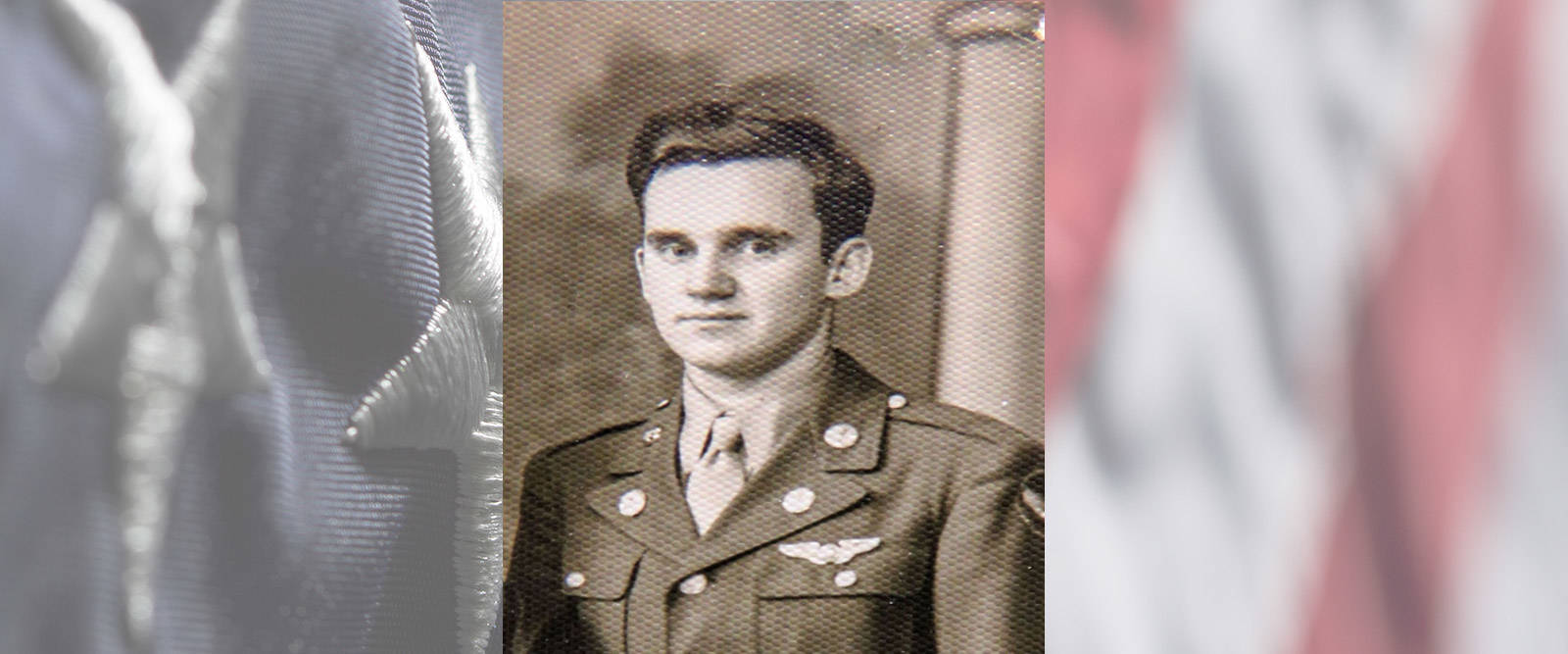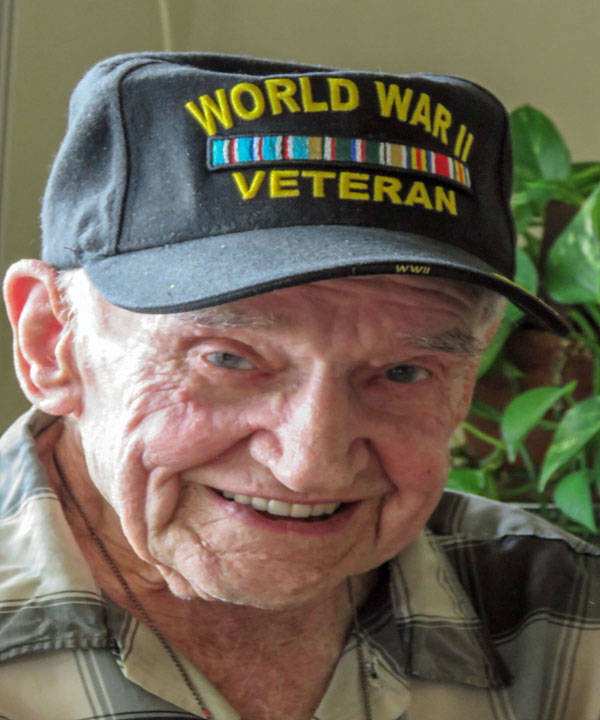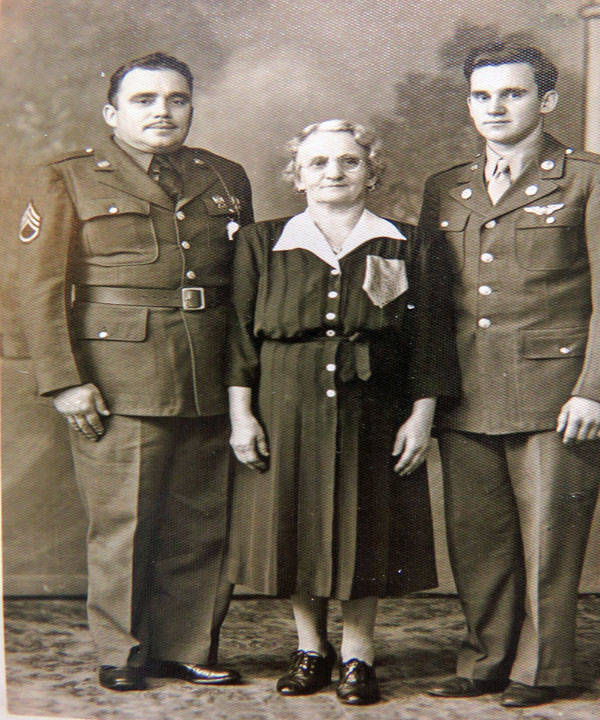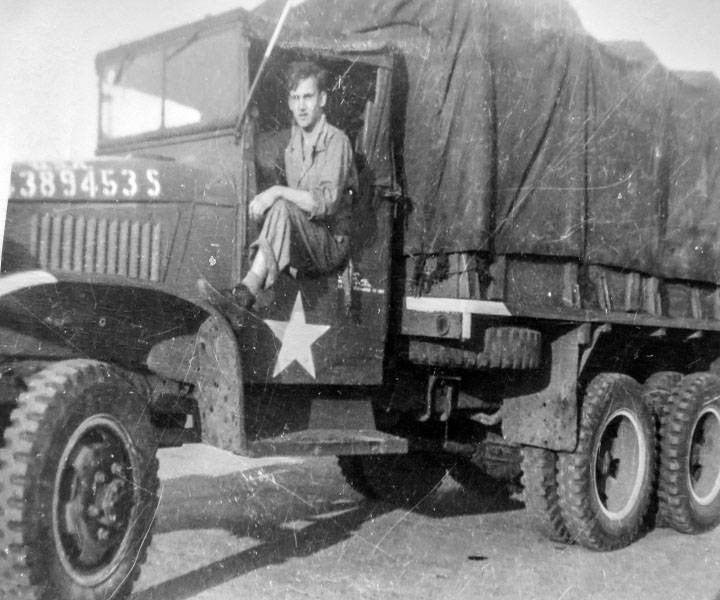U.S. Army Air Corps World War II Shaumburg, IL Flight date: 09/12/18
By Carla Khan, Honor Flight Chicago Veteran Interviews Volunteer
Aloysius (Al) Mack was the youngest of 8 children, 4 girls and 4 boys. His brother Frank was already serving in the US Army in France when Al was drafted. His mother was not happy to see her “baby” join the Army at the age of 19, but Al had no choice. He had finished 8th grade and one year of high school in Blue Island, IL, a small community just south of Chicago and was working when he was called up. After reporting to Fort Sheridan on the Chicago North Shore, he was sent along with many other new recruits by train to the Jefferson Barracks Military Post, south of St. Louis for four weeks of Basic Training.
Al, who already was in pretty good physical condition, had no problem with all the early morning runs before breakfast followed by marching and running; he completed the training without difficulty. His next stop after a long train ride was Walla Walla, WA. The training consisted of more physical exercise; in addition, he also had been selected to become a driver of a 2 ½ ton truck. These trucks were big and heavy, operated with a manual transmission and had no power steering. Al learned to drive a complicated stick shift system, drive in a convoy, park in tight spots, and get away in a hurry when necessary. In all, he thought it was a pretty good assignment for a 19 year old.
After completing another four weeks of training, it was back on the train, heading east towards New Jersey. From here, the RMS Queen Mary would carry Al along with thousands of other members of the US military to Scotland. This was where each soldier would be assigned as part of the US efforts in WWII. Crossing the Atlantic was rather uneventful and Al did not suffer from any seasickness thanks to pills that had been issued by the medics. Food was informally distributed in a chow line and “wasn’t too bad.” When the RMS Queen Mary docked in Scotland, Al continued by train to what was to become his permanent base, RAF Deopham Green, England. He joined the 452nd Bomb Group and supported the 728th Bomb Squadron which would be flying B-17s on bombing missions to many specific targets all over occupied Europe.
Deopham Green was brand new and the more than 3,000 men were housed in so called Quonset huts. Al’s initial daily routine consisted of early morning exercising followed by a breakfast consisting of “something made of powdered eggs,” cereal, milk and/or coffee. Then he would drive his truck hauling supplies; if it was not busy there were sports such as baseball and basketball to play. Once the troops were all settled in, life changed. Instead of supplies, Al would transport bombs and bullets to be loaded into the B-17s.
Because the Royal Air Force (RAF) flew its missions at night and the USAF would leave early in the morning, the schedule became very busy. Not only did they transport the ammo, they also loaded it into the B-17s under supervision of a loadmaster. It would take 4 men about an hour to load one bomber. If the weather was bad, the flights were halted. But as soon as the weather cleared up, close to 30 B-17s would take off. The flights were very risky and one never was sure if they would return. Most missions were completed within a couple of hours. Often planes had received damage from enemy fire and parts had to be brought in for the repair. Heavily damaged aircraft were sent to bases with official repair facilities. If a plane was lost, a brand-new replacement was flown in from the USA.
This was Al’s world for almost 3 years. Occasionally he would get a pass to leave the base on his days off and would venture into the nearby city to get himself some fish and chips. Once, he took the train and visited London. During all that time, he always had a safe return home in the back of his mind. Finally when VE Day arrived on May 8, 1945, his wish became true. While some of the men were concerned that they would be sent to the Far East to continue fighting there, Al, had accumulated enough points to be honorably discharged. He returned stateside, once more on the RMS Queen Mary, then traveled by train from New Jersey to South Dakota where he was discharged. Again, he took the train, this time finally to Chicago where he surprised his mother with his arrival. She now had both her sons, Al and Frank, safely home from the war.
Pretty soon, he found a job with the Ford Motor Company. He married his girlfriend, Ann, in 1947. They moved from suburban Blue Island to Chicago where they lived until 1977 when Ann passed away. Eventually, Al met Violet and together they moved to the northwest suburbs. Throughout the years, Al stayed with the same employer until he eventually retired.
Thank you for your service, Al. Enjoy your well-deserved Honor Flight, and welcome home!





